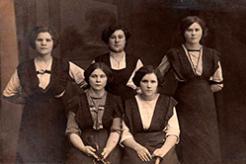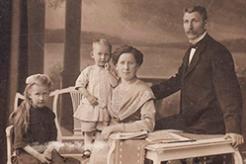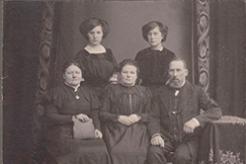




Author: Pēteris Korsaks
In terms of its importance, the invention of photography may be compared to the invention of writing or the invention of wheel. Its rapid spread was fostered by the ability to acquire a cheaper picture than ordering a portrait from a painter.
Immediately after its invention, photography started evolving in its technical aspects, and it was widely used in various fields of life: in forensic medicine, ethnography, architecture, science and so forth. The new means of expression spread with incredible speed, not respecting national frontiers. The founder of Latvian photography Mārtiņš Buclers in 1907 in his magazine “Stari” (“Rays”) wrote the following: “Photography spread with great speed and found friends among all classes of people, because it created an incomparably cheaper source of portraiture production than the creation of a painting. The current advantage of the rich has become a possibility for everyone.”[1]
The explosion of photography in Latvia was closely associated with the general upswing of photography in Western Europe. There were many photographer societies in Vienna, in Paris, in London, in St. Petersburg and in Riga; since the latter was located at an advantageous traffic and waterway junction between the West and the East, it was slowly transforming into a city of industrialists. Oftentimes photographers going to St. Petersburg or Warsaw would stop in Riga and open a season photography studio. The first decade, or the so called period of daguerreotype photography, was dominated by the French, the Italians and the Germans.[2] In the 19th century, the monopoly of amateur photography belonged to the Germans, even though Latvian photographers were keeping them on their toes. The new invention as a new form of self-expression caught the attention also of wealthy Latvian peasants and parish teachers. The aforementioned Mārtiņš Buclers[3] learned the craft of photography from 1894 until 1897 with one of Riga’s oldest German photographers Robert Borhard, who had started his activities still in the period of daguerreotype, in 1850.[4] The growth of population in Riga at the beginning of the 20th century also affected the increase of the number of studios, because photography as a new phenomenon caught the interest of the society – had there been no demand, there would have been no supply. In 1862, there were approximately 20 photo studios in Riga. In 1905, already 37 studios, in 1910 – 45 studios, but on the threshold of World War I, approximately 60. This increased the competition among photographers, and many more of them were Latvian amateur photographers.
More information will be available in the virtual exhibition, which will be established till April 2016.
[1] Buclers, M. Portreja // Stari. – 1907. – Nr. 5. – 395.lpp.
[2] Das Inland. – 1842. – Nr. 39. – S. 338.
[3] Latvijas fotomāksla: vēsture un mūsdienas / sast. P. Zeile. – Rīga: Liesma, 1985. – 62.lpp.
[4]Ibid.